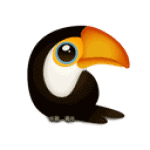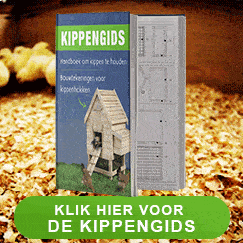If you are a lover of quail, then ringing these birds is essential for their identification and registration. Ringing quail is an important part of their care and well-being, and it can help track their health and breeding.
In this ultimate guide to Japanese quail ringing, we’ll discuss everything you need to know about ringing these birds, including when and where to buy rings, how to choose the right ring size and how to apply and remove the rings correctly.
Whether you are a novice quail keeper or an experienced breeder, this guide will help you keep your quail healthy and safe and ensure that you can enjoy these fascinating birds to the fullest.
Ring size Japanese quail
The ring size for a Japanese quail (Coturnix japonica) is an essential aspect to consider when keeping these special birds.
The correct ring size ensures that quail are comfortable and safe and helps keep track of their identification and age.
For Japanese quail, the recommended ring size is between 5.5 and 7 millimeters in diameter. This size provides adequate freedom of movement and prevents the ring from being too tight around the quail’s leg, which can lead to pain, injury or stunted growth.
It is important to ensure correct technique and high-quality rings when ringing Japanese quail so that both quail and owner can benefit from a well-organized and responsible approach to keeping these fascinating birds.
Difference Jumbo quail against an ordinary Japanese quail
When discussing the ring size for quail, it is important to distinguish between the Jumbo quail and the common Japanese quail. Although closely related, these two species have different ring sizes because of their size. The common Japanese quail (Coturnix japonica) has a ring size of about 5.5 millimeters. On the other hand, Jumbo quail, characterized by their larger size and weight, require a larger ring size, ranging from 6.5 to 7 millimeters. This allows Jumbo quail to live comfortably and safely without restrictions. It is essential to consider these differences when selecting the proper ring size for a specific quail species. By choosing the proper ring size and ensuring proper ringing technique, both quail and owners can benefit from a responsible and well-organized approach to keeping these fascinating birds.
How to ring Japanese quail?
Next, make sure you use high-quality rings that fit the size of the quail’s leg.
Place the ring over the quail’s leg, 3 toes forward 1 to the back. Carefully slide the ring upward until it is firmly in place. Make sure the ring is not too tight, but also not too loose, as this can cause discomfort or injury to the bird. Slide them no higher than “the knee” of the quail.
It is important to calm and hold the quail during ringing to ensure the procedure goes smoothly. By using proper technique and caution, you can ring quail safely and adopt a well-organized and responsible approach to keeping these fascinating birds.
When should you ring Japanese quail?
The ideal age to ring Japanese quail is between 10 and 14 days. This time frame ensures that the quail’s leg has grown enough to support the ring, but is still flexible enough to allow the ringing process to proceed smoothly.
Ringing quail outside this age group can lead to complications, such as a ring that is too tight and stunts growth or a ring that is too loose and can be easily lost.
By making sure you ring quail at the right time, you promote their well-being and provide an optimal environment for identification and record keeping. In addition, it helps keep your quail healthy and comfortable throughout their lives.
Where can you buy rings?
When looking for rings for your quail, it is important to know where to purchase reliable and quality rings. An excellent source for buying rings are bird clubs affiliated with recognized associations such as KBOF, AOB or other reputable organizations. These clubs typically offer high-quality rings that meet association standards and guidelines, assuring you of a safe and appropriate product for your quail.
You can also buy rings online through specialized web shops or well-known marketplaces. However, it is important to pay attention to the reliability of the seller and the quality of the rings, as there may be less oversight of online sales. Read reviews and seek advice from other quail keepers to ensure you purchase the right rings.
Finally, there are snap rings available that you can easily put on and off the quails. These rings are especially useful for beginners or for situations where you need to remove or replace the rings regularly. It is important to know how to use these snap rings correctly to avoid unnecessary discomfort or injury to quail. By buying and using the right rings, you will ensure optimal identification and registration of your quail and contribute to their well-being and comfort.
If you are a lover of quail, then ringing these birds is essential for their identification and registration. Ringing quail is an important part of their care and well-being, and it can help keep track of their health and breeding. In this ultimate guide to Japanese quail ringing, we’ll discuss everything you need to know about ringing these birds, including when and where to buy rings, how to choose the right ring size and how to apply and remove the rings correctly. Whether you are a novice quail keeper or an experienced breeder, this guide will help you keep your quail healthy and safe and ensure that you can enjoy these fascinating birds to the fullest.



